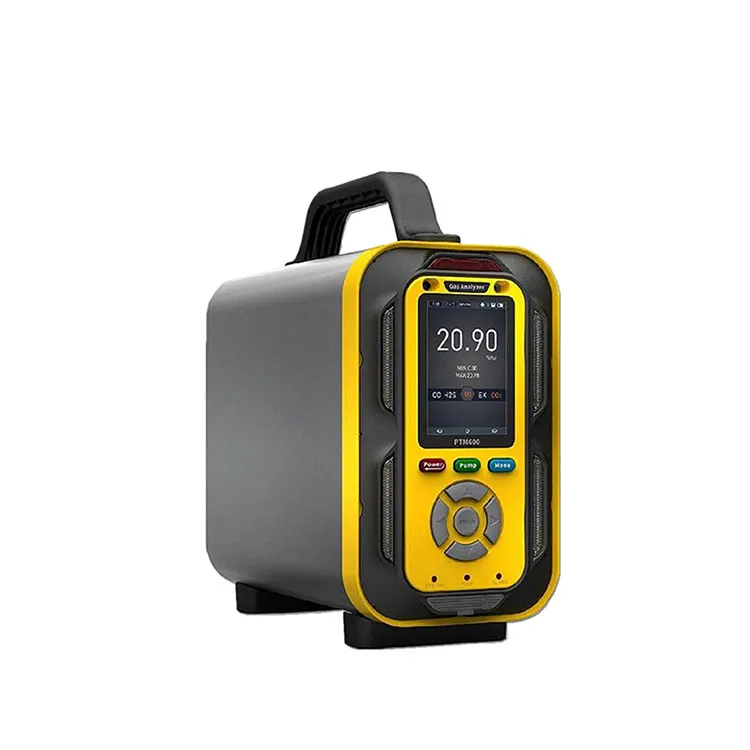- English
- Español
- Português
- русский
- Français
- 日本語
- Deutsch
- tiếng Việt
- Italiano
- Nederlands
- ภาษาไทย
- Polski
- 한국어
- Svenska
- magyar
- Malay
- বাংলা ভাষার
- Dansk
- Suomi
- हिन्दी
- Pilipino
- Türkçe
- Gaeilge
- العربية
- Indonesia
- Norsk
- تمل
- český
- ελληνικά
- український
- Javanese
- فارسی
- தமிழ்
- తెలుగు
- नेपाली
- Burmese
- български
- ລາວ
- Latine
- Қазақша
- Euskal
- Azərbaycan
- Slovenský jazyk
- Македонски
- Lietuvos
- Eesti Keel
- Română
- Slovenski
- मराठी
- Srpski језик
What are the key points for safe use of gas analyzers in flammable and explosive environments?
In flammable and explosive environments, the safe use of gas analyzers is a key link to ensure production safety and prevent accidents. These environments are common in many industries such as petrochemicals, gas, ships, and wood processing. Once the gas leaks and reaches the explosion limit, the consequences will be disastrous. Therefore, it is very important to master the key points of safe use of gas analyzers. So what are the key points for safe use of gas analyzers in flammable and explosive environments?

The following are the key points for safe use of gas analyzers in flammable and explosive environments:
I. Preparation before operation
1. Professional training: Operators should undergo professional training to acquire the knowledge and skills to operate gas analyzers and understand relevant safety precautions. Ensure that operators are familiar with the equipment's instruction manual and operate the equipment correctly.
2. Equipment inspection: Before operation, the gas analyzer should be fully inspected, including battery power, air inlet filter, sensor status, etc., to ensure that the equipment is in normal working condition.
3. Safety equipment: In flammable and explosive environments, operators should wear necessary personal protective equipment, such as explosion-proof clothing, explosion-proof shoes, protective glasses, gas masks, etc., to reduce the risk of accidents.
II. Operation process
1. Ventilation conditions: Ensure that the operating area is well ventilated to avoid local accumulation of flammable and explosive gases. If possible, use explosion-proof ventilation equipment to improve ventilation conditions.
2. Avoid collision: During operation, collision with the gas analyzer should be avoided as much as possible to avoid equipment damage or data abnormality.
3. Real-time monitoring: When using a portable gas analyzer, it should be worn as close to the mouth and nose as possible, such as the front collar of the clothes, the brim of the hat, etc., so as to detect the gas concentration in the surrounding environment in real time.
4. Pay attention to the type of gas: Understand and confirm the type, concentration and state of the gas being detected in order to choose the appropriate detection method and protective measures.
III. Safety precautions
1. No fireworks: In flammable and explosive environments, smoking, using open flames and other behaviors that may cause fires and explosions are strictly prohibited.
2. Anti-static: Pay attention to anti-static measures to avoid accidents caused by static sparks. Operators should wear anti-static clothing and minimize friction with metal objects.
3. Emergency evacuation: Once the gas concentration exceeds the standard or is abnormal, the operation should be stopped immediately, evacuated to a safe area quickly, and the emergency response procedure should be initiated.
IV. Regular calibration and maintenance
1. Regular calibration: Calibrate regularly according to the use frequency and requirements of the analyzer to ensure the accuracy of the measurement results. The calibration process should be strictly carried out in accordance with the instruction manual.
2. Maintenance: Clean, inspect and maintain the gas analyzer regularly, including cleaning the sensor, checking the gas source and pipeline, replacing consumables, etc. Ensure that the equipment is in good condition and extend its service life.
V. Management system
1. Establish a safety management system: formulate and implement a safety management system for the use of gas analyzers, and clarify the responsibilities, operating procedures, safety precautions, etc. of operators.
2. Training and supervision: Conduct safety education and training for operators regularly to improve safety awareness and operating skills. At the same time, managers should strengthen supervision and management of operators to ensure that safety operating procedures are effectively implemented.
To sum up, when using a gas analyzer in a flammable and explosive environment, you must strictly abide by safety operating procedures and precautions, which can effectively reduce the risk of accidents and ensure the safety of personnel and equipment.







